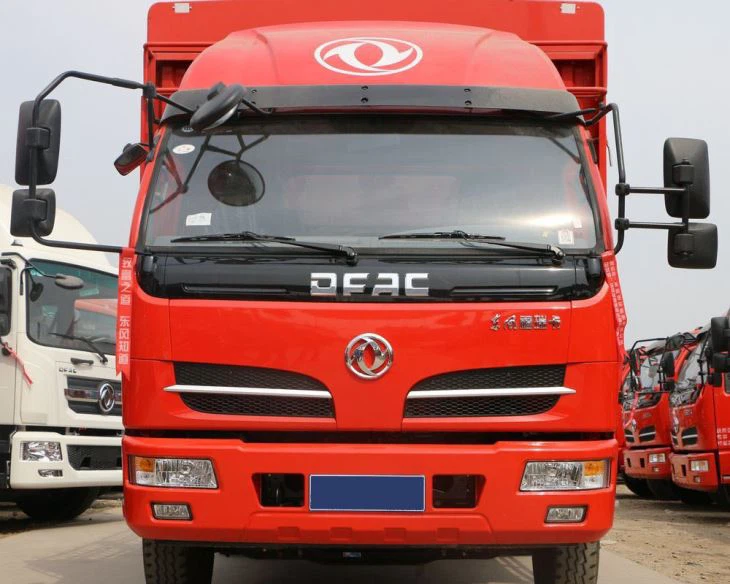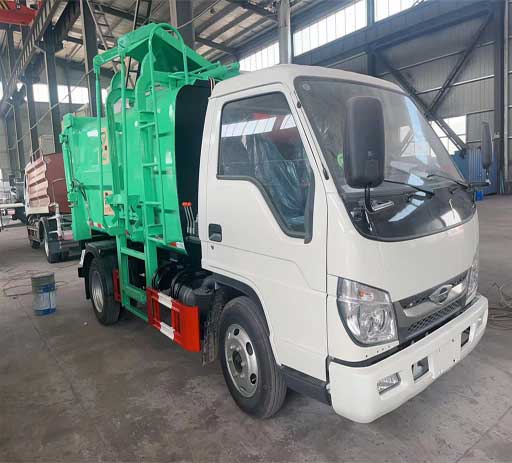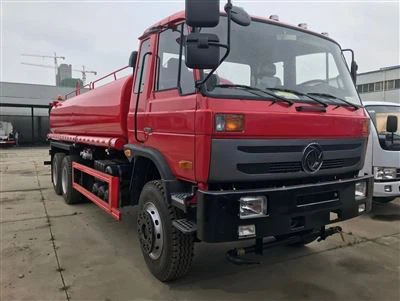Class 6 Hooklift Truck for Sale: A Comprehensive Buying Guide

Introduction to Class 6 Hooklift Trucks
Class 6 hooklift trucks are versatile vehicles that play a crucial role in various industries, from waste management to construction. Due to their ability to easily switch between different types of containers, they are favored for their efficiency and practicality. This article will explore everything you need to know about class 6 hooklift trucks, covering their features, benefits, maintenance, and where to find them for sale. Whether you’re a business owner looking to upgrade your fleet or an individual interested in purchasing one, this guide will provide valuable insights.
What is a Class 6 Hooklift Truck?
A class 6 hooklift truck is a medium-duty truck typically classified based on its Gross Vehicle Weight Rating (GVWR), which ranges from 19,501 to 26,000 pounds. Hooklift trucks are unique because they can lift and transport various containers or bodies using a hook system mounted on the chassis. This ability allows for quick changes in load type, making them ideal for a range of applications.
Key Features of Class 6 Hooklift Trucks
- Payload Capacity: These trucks can generally handle payloads of up to 14,600 pounds, making them suitable for many hauling tasks.
- Versatility: The ability to switch between different containers such as dumpsters, flatbeds, and other specialized bodies enhances productivity.
- Maneuverability: Being medium-duty, class 6 hooklift trucks strike a balance between size and power, allowing them to navigate urban settings more effectively than larger trucks.
- Enhanced Stability: Many models come equipped with stabilizers that provide additional support during loading and unloading.
Benefits of Using Class 6 Hooklift Trucks
1. Increased Efficiency
The hooklift system allows operators to switch containers quickly, reducing downtime on job sites. For instance, a waste management company can interchange between a refuse container and a recycling container swiftly, maximizing productivity throughout the day.
2. Cost-Effectiveness
Investing in a class 6 hooklift truck can save money in the long run. Companies can mitigate costs associated with fleet maintenance and permit fees by using one truck for multiple purposes instead of owning several specialized vehicles.
3. Environmental Considerations

Class 6 hooklift trucks contribute positively to sustainability efforts by facilitating efficient waste disposal and recyclable material transportation. With increased compliance to environmental regulations, these vehicles support responsible practices.
4. Customization Options
Buyers can choose from various attachments, making it easier to customize a hooklift truck to meet specific operational needs. Examples include hydraulic systems for trailers and specialized dumpsters for debris collection.
Types of Hooklift Trucks Available
1. Standard Hooklift Trucks
This type is the most common and can transport standard containers that are typically 10 to 20 cubic yards, making them suitable for general applications.
2. Roll-Off Hooklift Trucks
Roll-off hooklift trucks are designed to accommodate larger containers, perfect for heavy-duty applications like construction debris transportation. They often feature a heavier chassis for added durability.
3. Specialized Hooklift Trucks
Some hooklift trucks come equipped for niche industries such as hazardous waste management or food waste collection, featuring specialized container designs.
How to Choose the Right Class 6 Hooklift Truck
1. Assess Your Needs
Start by evaluating your specific requirements. Consider factors like the types of materials you plan to transport, the weight limits, and the frequency of usage.
2. Evaluate Payload Capacity
Ensure the truck has a suitable payload capacity. A truck that’s too small won’t handle your loads efficiently, while an oversized truck could lead to unnecessary expenses.
3. Inspect Build Quality
Assess the truck’s construction quality, including the chassis, suspension, and hydraulic systems. Opt for reputable brands known for durability.

4. Consider Features and Attachments
Look for trucks with flexible features, such as easy container swaps and customizable attachments. These features can enhance productivity and efficiency.
5. Check Maintenance and Support

Understand the maintenance requirements and ensure that service support is readily available in your area. A good warranty is also a key factor.
Where to Find Class 6 Hooklift Trucks for Sale
1. Online Marketplaces
Websites like eBay, Craigslist, and TractorHouse often have listings for new and used hooklift trucks. Search using specific keywords to refine results.
2. Dealerships
Visit local truck dealerships that specialize in commercial vehicles. They may have branded models, plus the advantage of direct customer service and support.
3. Auctions
Construction equipment auctions can be an excellent source for potential purchases. Attendees can find often well-maintained equipment at competitive prices.
4. Manufacturer Websites
Check manufacturers’ websites for new truck models and promos. Popular manufacturers of hooklift trucks include Jerr-Dan, Autocar, and Peterbilt.
Cost Considerations for Class 6 Hooklift Trucks
1. Purchase Price
The price of class 6 hooklift trucks can vary significantly based on age, brand, and condition. Generally, expect to spend anywhere from $30,000 to $100,000 for a new truck.
2. Operating Costs
Consider ongoing costs such as fuel, insurance, maintenance, and repairs to estimate the total cost of ownership effectively.
3. Financing Options
Explore financing options available through dealers or financial institutions. Many lenders offer loans specifically for commercial vehicles.
Maintenance Tips for Class 6 Hooklift Trucks
1. Regular Inspections
Conduct routine inspections of the hydraulic systems, chassis, and suspension components to catch issues early before they escalate.
2. Fluid Checks
Regularly check hydraulic fluid, engine oil, and coolant levels to ensure optimal performance. Top up or replace fluids as needed.
3. Cleaning
Keep the truck clean from dirt and debris. Regular washing helps prevent rust and other corrosion-related issues.
4. Follow Manufacturer’s Maintenance Schedule
Adhere to the manufacturer’s recommended maintenance schedule for oil changes, tire rotations, and component checks. This can prolong the life of your truck.
Practical Examples of Class 6 Hooklift Truck Usage
1. Waste Management
A local waste management company utilizes a class 6 hooklift truck to swap between waste containers and recycling bins throughout the city. This efficiency significantly reduces transportation costs and time.
2. Construction Sites
Construction firms frequently use hooklift trucks for transportation of construction materials, debris removal, and portable storage. The ability to switch containers allows for a streamlined workflow on-site.
3. Landscaping Services
Landscapers benefit from using class 6 hooklift trucks to transport mulch, soil, and equipment. The versatility lets them adjust container types as projects demand.
Frequently Asked Questions (FAQs)
1. What is the typical lifespan of a class 6 hooklift truck?
The average lifespan can range from 10 to 15 years, depending on maintenance and usage frequency.
2. How much weight can a class 6 hooklift truck carry?
Generally, these trucks can carry a payload capacity of up to 14,600 pounds.
3. Are hooklift trucks suitable for snowy or icy conditions?
Yes, but operators should ensure that they are equipped with appropriate tires and safety measures for heightened traction in adverse conditions.
4. Can I use a hooklift truck for transporting hazardous materials?
Yes, but it’s crucial to use specialized containers and adhere to local regulations regarding the transportation of hazardous materials.
5. Do I need a special license to operate a class 6 hooklift truck?
In most jurisdictions, a standard commercial driver’s license (CDL) is typically sufficient, but it’s best to check local regulations.
6. How do I find parts for maintenance on a hooklift truck?
Parts can often be sourced through the manufacturer’s website, authorized dealers, or third-party parts suppliers that specialize in commercial vehicle components.
